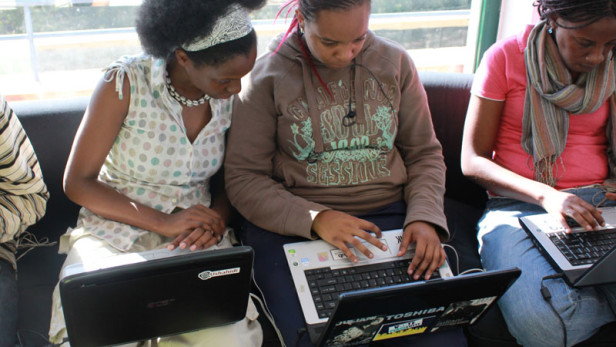Using Data to Bridge Gaps in the Humanitarian Sector
In the tech industry, terms such as “iterate,” “test,” “lean” and “pivot” have turned into buzzwords. These ideas we all now expound point to a central thesis: Continually ask questions, listen to your customers, and gather as much relevant data as you can while spending as little money possible until you identify the right solution. In the development industry, we could heed this advice. Monitoring and evaluating our work is something we often do after the fact. Too often, M&E is done once a year, and only to appease funders or for future program planning.
 Volunteer mappers at the iHub in Nairobi during the deployment of Uchaguzi in 2010, spearheaded by nonprofit software company Ushahidi to monitor the Kenyan constitutional referendum. Photo by - Cody Valdes / CC BY-NC-SAIn humanitarian crisis response, we often don’t focus enough of our efforts on assessing needs and asking questions. In the wake of disaster, we instead get tunnel vision focused on delivering services as quickly and to as many people as possible. To help break that pattern, the relief industry has recently become fascinated with data. But we need to ask ourselves what data is truly helpful, actually useful, really helps us improve our impact, and better aids our beneficiaries. We often get excited about uncovering gems in big data archives. But the reality is that the most important and useful data is the real time feedback from those we serve.
Volunteer mappers at the iHub in Nairobi during the deployment of Uchaguzi in 2010, spearheaded by nonprofit software company Ushahidi to monitor the Kenyan constitutional referendum. Photo by - Cody Valdes / CC BY-NC-SAIn humanitarian crisis response, we often don’t focus enough of our efforts on assessing needs and asking questions. In the wake of disaster, we instead get tunnel vision focused on delivering services as quickly and to as many people as possible. To help break that pattern, the relief industry has recently become fascinated with data. But we need to ask ourselves what data is truly helpful, actually useful, really helps us improve our impact, and better aids our beneficiaries. We often get excited about uncovering gems in big data archives. But the reality is that the most important and useful data is the real time feedback from those we serve.
Data shouldn’t be a snapshot, and our programs don’t need to be held rigidly to the path set out in the program description — often written years before implementation. We need to be continuously listening to our communities, our users, our constituents, and then adapting our programs, projects, and initiatives accordingly. We need to listen to the tech community; not only about technology and data, but about the process of building by listening. At Ushahidi, we build data collection tools to help ease the communication between marginalized communities and those who aim to help them...
- Login to post comments